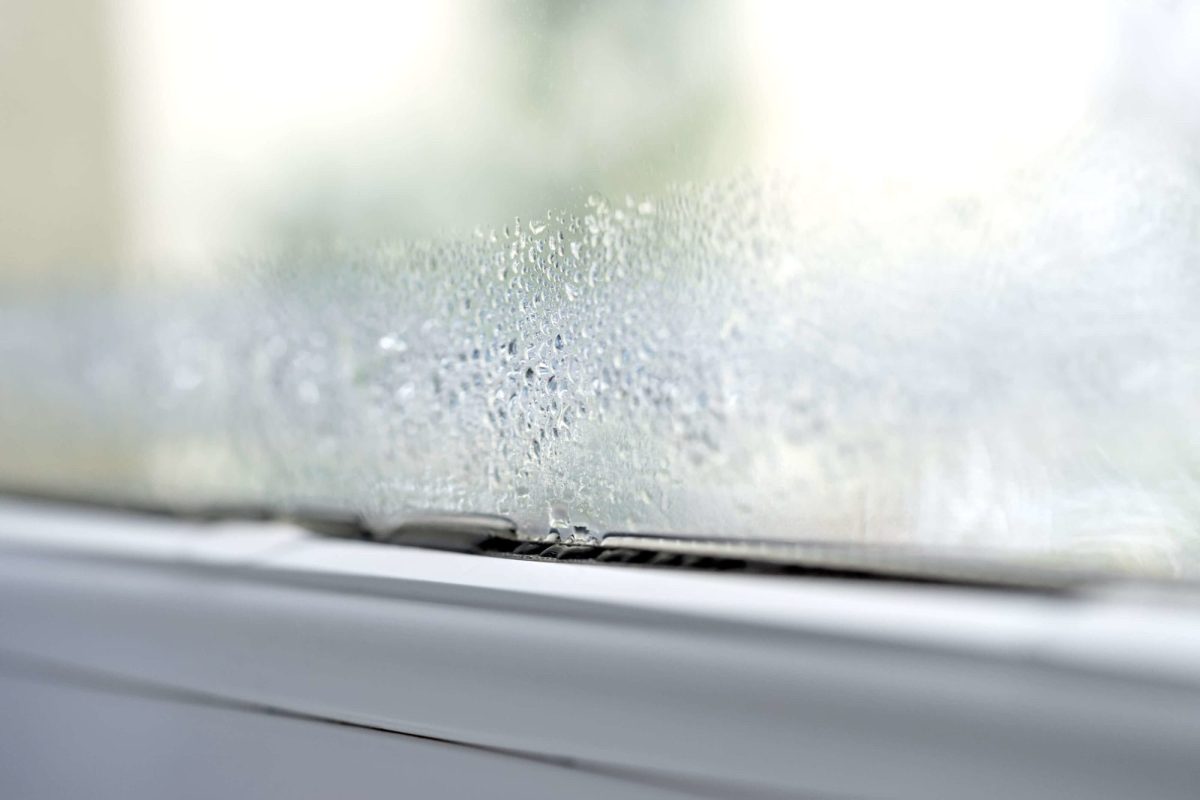Why do I have condensation on the inside of my windows

It’s that time of year. When the air outside is cold and the heating is on inside, condensation in conservatories or windows can become a real problem. Cold spots, moisture, poor ventilation and inefficient heating are all common causes of condensation, here’s our low-down on condensation in conservatories and on windows – what’s good, what’s bad and how to deal with it.
Condensation on the Inside of Conservatories and Windows
Here’s how condensation happens. The point where the cold and warm air meets and condenses is called the dew point. Warm air is more buoyant than cold air and carries more water vapour. If the air’s capacity to hold the water vapour is getting high and this warm air comes into contact with a cold surface, like a pane of glass, the vapour turns to water droplets and causes condensation.
You might find that this happens more often on north or north-east facing windows and conservatories, as they get less sunshine, so they are naturally cooler.
My House or Conservatory is Insulated so why do I get Condensation?
The energy efficiency of buildings has improved over the years as we’ve replaced old draughty windows with double glazing and insulated cavity walls and roof spaces. This extra insulation and draught proofing makes for a warmer home, but in older properties it can reduce natural ventilation which traps moisture in the room. When the room or conservatory cools down overnight or when it’s not being used, the moist air condenses and mists up the glass. Without proper ventilation, this condensation can start to build up causing damp and mould in homes and conservatories. So, if your house is well insulated, reducing the amount of moisture generated in your home can assist in reducing the risk of condensation. One way to reduce moisture is to fit extractor fans in bathrooms, utility rooms and kitchens, all areas where moisture is generated more.
If you use your conservatory during the colder months, it is possible that you will suffer from condensation. Moisture that builds up in the conservatory will form condensation when the space cools down again when not in use. Condensation in conservatories can be a serious issue where the roofs, windows and doors of older, inefficient conservatories are poorly insulated. Opening a window for ventilation will allow fresh air in to help reduce the moisture level. If the problem is particularly bad, it may be necessary to update the glazing and roof with modern, more energy efficient products to make it a better space to live in during the winter months.
Preventing Condensation in Conservatories and the Home
There are small changes you can make to help reduce the condensation problems in your home. Opening a window when taking a bath or doing the washing up can let out any steam that’s created. Or better still, fit a good quality extractor fan. Utilising cooker hood ventilation whilst you’re cooking and ensuring that tumble dryers are vented outside or have a built-in condenser will also greatly reduce moisture build up in your wet rooms. Also try to dry washing in a well-ventilated room if you can’t hang it outside.
It’s worth opening a window and pulling back window coverings like blinds and curtains once a day, to improve the flow of fresh air around your home.
If your condensation is persistent, a dehumidifier can prove to be a good investment if you are not in a position to replace your windows or conservatory glazing. A dehumidifier will draw the moisture out of the air to reduce the chance of condensation forming on the windows.
